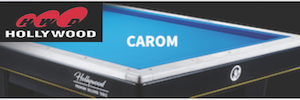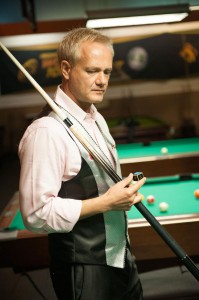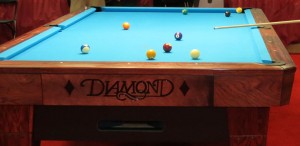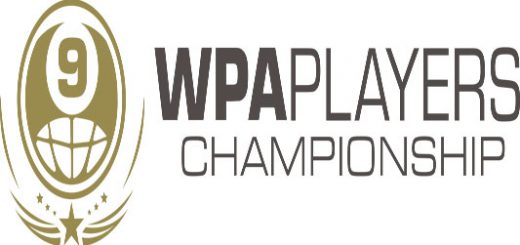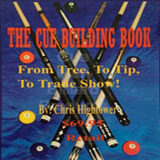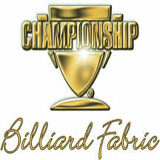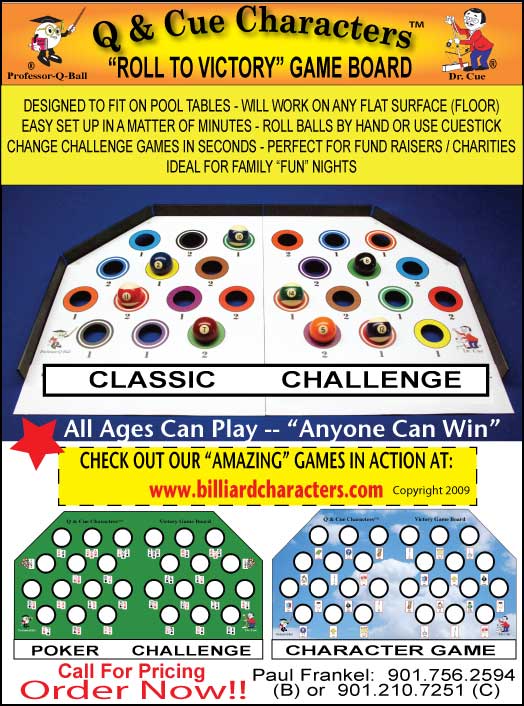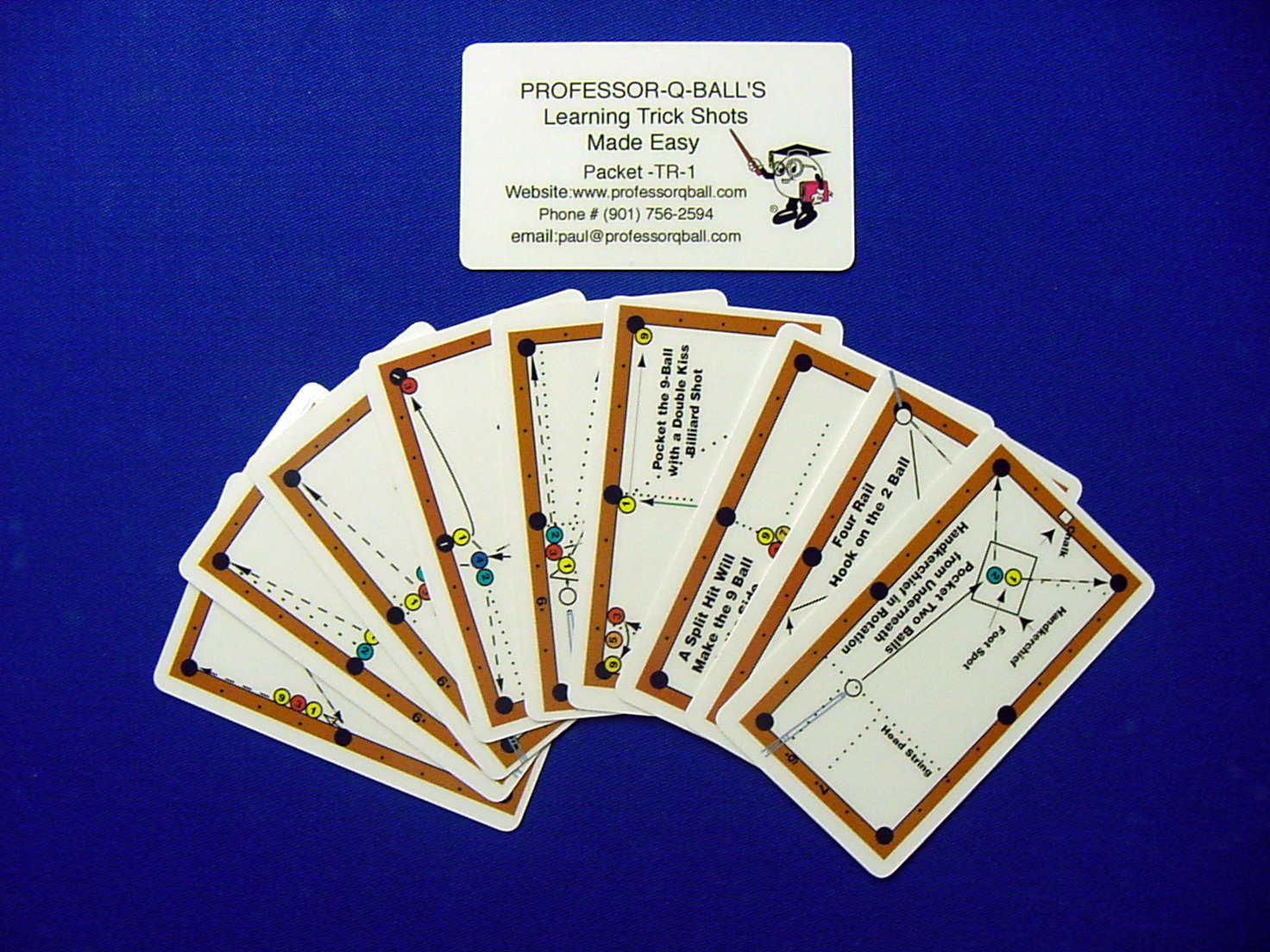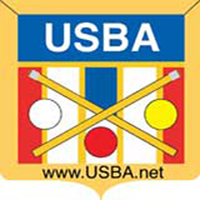Tremendous changes in table size specifications were made in 1949! How about going back to those roots?
Back to the roots!
By Ralph Eckert
Tremendous changes in table size specifications were made in 1949! How about going back to those roots?
Hadn’t it just been announced in the January 2008 edition of the Billiards Digest that 9-Ball had died? Soft-breaks, machine racking, break zones, tapping, and alternate breaks declaring the fall of this discipline – surely partially correct.
Now I would just like to briefly summarize what has already been published in all detail. Tournament hosts favored hard breaks, but inventive triangles or tapped tables provided players with perfect racks, so breaking hard was not necessary any more. In fact, breaking softly made it easier to control the cue ball for position – and pocket one or more balls on the break. Of course most players immediately started using soft breaks. No need to say that many professional players, after years of training on smashing racks, complained about losing an edge they had worked on for such a long time!
New rules were established in order to get people back to old-school high-speed breaking practice. Some tournaments (mostly U.S. based) had their players break from the box, European events had their nine-balls racked on the foot spot (WC 2001 and Euro Tour 2008) and required three balls to cross the head string (or be pocketed) for breaks to be valid. Not to mention tightening the pockets sometimes to even sub-standard sizes that promoters initiated (WC 2005)! WPA specs were remediated afterwards. All these changes ought to make breaking (and thus running games) more challenging.
More challenging it had to be, since significant increases in skill enabled players to sometimes run complete matches. That’s not only making it look too easy and just plain boring for TV, just watching the same guy at the table all the time, leaving no chance for his opponent to show off. To be fair in sports, you at least ought to have a chance to take your turn. Good-bye winner break. If we define billiards as pure game however things may be different. So then, alternate breaks should solve that, either after each or (to add to audience’s confusion) every three games.
Anyway. After all these years of fumbling and messing around with the rules obviously no satisfying results have been achieved. We will have to look forward to even more changes and readjustments in the future. 10-ball has already become common enough to arrange a world championship of its own. Why not? Comes time come people who run complete matches in 10-ball, if only their racks are tight enough.
So we’re not just talking 9-ball here. Finally, the world championship in straight pool is back. Like a relic from a former era. It had gone lost because running to 150 balls will not figure out a champion when there are people out there who can make that many balls in one inning. Like this, lag or opening shots will decide on all the game. In 1966 Irving Crane ran out to 150 upon stepping up to the table and won his US-Open final match against Joe Balsis. Before WWII, playing up to 300, mostly even 600 balls and more was standard!
Is it advisable to play up to 150 balls at a world championship, when almost all attendees scored high runs of 200 balls and more? No wonder players turned towards more “complicated” disciplines like 9-ball and one-pocket in the 70’s and 80’s. So the obvious question arises whether pool billiards in general has become too easy.
Yes and no. But there definitely was a huge setback in 1949. Until then standard pool tables measured 10 ft! Changing to 9 ft tables should bring a dying game back to the masses. Now, 60 years later that paid off: Pool billiards has become international and more popular than ever. Owing to a couple of decent movies though, not table sizes.
As we all now – the more common a sport gets, the tougher its competition becomes. Exactly this is happening right now in pool. And it’s going to rise on, although at the very top we are already very close to perfection. In some countries temporary perfection is meanwhile reached by otherwise completely unknown players.
Instead of constant modifications in rules, disciplines, tournament regulations and specifications the decision of 1949 could just be cancelled! “Impossible” is what you may think and what I’ve often heard upon suggesting this. To be honest, it was also the first thing to come to my mind”¦
Let’s dig into it: First of all, WPA should readmit 10 ft tables – for all tournaments! Imagine the next world championship carried out on 10 ft tables: Racking in good ole standard position, no break box or any other obfuscation to make 9-ball “more complicated”, no guaranteed balls on the break and winner breaks. Play the game on a regular table like before 1949 and you will see: the game is tough enough! Straight pool would be more interesting too. Would you believe the high-run in tournaments before 1947 was 127 balls on 10 ft tables? Held by Jimmy Caras and Willie Mosconi.
Secondary effect: Pool wouldn’t look so cute compared to snooker on TV! Every layman can see just how “easy” the game on these little tables must be.
That’s exactly what I felt when I first entered the new pool café of Tobias Kim in Ludwigshafen (Germany) in 1982 – I saw this tremendous 12 ft snooker table and thought to myself: “That must be the table the real pro’s play on!” They handed me a set of snooker balls “¦ and feeling like a fool I recognized my mistake. A mistake that wasn’t so capacious, if you compare incomes of pool and snooker pros nowadays.
Pool billiards on 10 ft tables would not only look superior – it would be superior! Just think that pool and snooker had been one and the same till 1857 – both were declared as billiards and neither separated by rules nor specifications. At that time the standard measurement of tables was 12 ft! In a way that also counts for carom, as the game on 12ft tables was usually played with 4 balls – scoring points by either pocketing balls or caroming into them.
The US-immigrants wanted to play billiards like in their homeland. At first they brought single tables or imported them. Later they were built in own billiard manufactures. So the change of the anyway not established specifications began. It was Michael Phelan in 1857, who formed the round pockets (like still used in Snooker nowadays) angular – so the “English” and “American” Billiard was born. At this point, in my opinion, the technical borderline to snooker was set. But that’s an article of its own!
About 1871 the first 11 ft table was in use and from 1890 on the first 10 ft tables had been established till about 1949! It was Jimmy Caras, who liked to say that HE would be the last unbeaten champion (1949 against Mosconi) at the 10 ft table. Meanwhile he has unfortunately passed away – but unbeaten!
I know the “homicide argument” well, which says that large tables aren’t commercial and that no poolroom owner would swap his beloved 9 ft to a 10 ft table. Well – he mustn’t! But he can! Why are there so many halls with 9 ft tables? Why not even 8 ft? Are they also not agreed? In the US there are enough! Or maybe 7 ft tables? Oh sorry, we’re drifting to coin-operated-business.
What would happen if a pool café would open up with only 10 ft tables? I would do so! It would be quite paradox – because I wouldn’t be able to arrange championships, because the playing materials wouldn’t match the concept of the WPA. Isn’t that delicate? True – it wouldn’t match the requirement – it would be much better!
I can only assume”¦ but at least the billiard manufacturers would surely be for it. For they could sell a few more and new tables. Certainly the 10 ft table is more expensive.
But if championships were held on 10 ft tables, the players would surely convince the café owners to buy at least 1 “big” table for training. The normal run of things begins”¦
Much – very much – officials, players and café owners don’t even know about the existence of 10 ft tables in the past. Not to speak of 11 or 12 ft before 1890! Alone for this we should not miss to mention these facts and bring them to mind. Especially when it is the WCBS wants to part the 3 disciplines opponent to the IOC. Just think about the fact, that the material in the past was almost unified.
Not to emulate snooker – then we could directly start playing pool on 12 ft tables like before 1871. Pool doesn’t need that. After all pool is the most popular billiard discipline! Of course also for the fact that pool is played on smaller tables. That’s the reason 9 ft tables should stay in use – but why additionally make 10 ft tables official?
Oh – there was once a very popular top player and world champion, who answered to this discussion that the game itself would change. The whole character of the game. Would it be possible to play 8-ball and 9-ball like we do right now?
Well, the same complaint could have been given by Willie Mosconi or Jimmy Caras in 1949. For they had changed and simplified “his” game!
I really don’t want to seem emphatic in this article. But I would like to ask you to discuss about it! Just for the fact that much has been forgotten or never known – because nobody talks about the alternatives”¦


